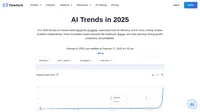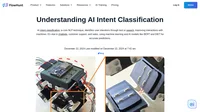AI adoption rates indicate the percentage of organizations that have incorporated artificial intelligence into their operations. These rates vary across industries, regions, and company sizes, reflecting the diverse applications and impacts of AI technology. According to McKinsey’s 2024 survey, AI adoption has surged to 72%, with significant contributions from generative AI. This reflects a global trend, with more than two-thirds of organizations in every region reporting AI usage, except for Central and South America, where the figure stands at 58%.
Importance of AI Adoption Rates
Understanding AI adoption rates is essential for several reasons:
- Market Trends: Adoption rates offer insights into the pace at which new technologies are embraced across sectors, indicating potential market trends and investment opportunities. For instance, National University reports that 77% of companies are either using or exploring AI, emphasizing its strategic priority.
- Industry Comparison: By comparing adoption rates across industries, businesses can benchmark their AI strategies against competitors, identifying potential gaps and opportunities. McKinsey highlights that professional services have seen the most significant increase in AI adoption.
- Policy and Regulation: Policymakers can use adoption rates to guide the development of regulations and support programs aimed at fostering AI innovation while addressing ethical and societal concerns.
Current AI Adoption Trends
- Global Uptick: AI adoption is increasing worldwide, with sectors like healthcare, financial services, and technology reporting significant growth. McKinsey’s data shows organizations experiencing material benefits, such as cost reductions and revenue increases, from AI deployment.
- Regional Leaders: Countries like India and the UAE are at the forefront of AI adoption, with over 50% of organizations utilizing AI technologies.
- Sector Variations: Industries such as manufacturing and healthcare are experiencing higher adoption due to AI’s role in optimizing operations and enhancing product offerings.
Challenges in AI Adoption
Despite the rising adoption, several challenges persist:
- Data Quality: Poor data quality remains a significant barrier, affecting the efficacy of AI models.
- Skill Gaps: A shortage of skilled personnel to manage and implement AI systems hinders adoption, particularly in smaller organizations.
- Cost and Complexity: High costs and the complexity of integrating AI into existing systems can deter businesses, especially those with limited resources.
- Inertia and Adjustment Costs: Organizational inertia and the costs associated with changing existing processes pose additional hurdles.
AI Adoption Studies
Numerous studies have analyzed AI adoption rates and their impacts across industries:
- MIT Sloan’s Study: This study highlights the uneven AI adoption in the U.S., with large companies and sectors like manufacturing and healthcare leading. It also notes the concentration of AI use in “superstar” cities.
- McKinsey Global Surveys: McKinsey provides extensive insights into AI adoption trends, noting a significant rise in generative AI usage. Their surveys indicate that marketing, sales, and product development are leading functions for AI implementation.
- National Bureau of Economic Research: Their findings reveal that despite the hype, only a small percentage of U.S. companies had adopted AI by 2017, with ongoing challenges due to systemic barriers.
- Vention Teams’ Reports: These reports focus on AI adoption statistics by industry and country, showing a strong correlation between AI integration and business performance improvements.
Use Cases and Examples
- Manufacturing: AI enhances production processes, predictive maintenance, and supply chain management, significantly reducing downtime and costs.
- Healthcare: AI applications range from diagnostic tools to patient management systems, improving efficiency and patient outcomes.
- Financial Services: AI aids in fraud detection, risk management, and customer service, offering personalized financial products and services.
- Retail: AI-driven analytics and recommendation systems enhance customer experiences and optimize inventory management.
Future Outlook
The future of AI adoption appears promising, with anticipated advancements in generative AI and its applications in new domains. As AI technologies become more accessible, adoption is expected to become widespread, with small and medium enterprises catching up with larger corporations. National University projects that AI could contribute $15.7 trillion to the global economy by 2030, despite potential job displacement.
Understanding AI Intent Classification
Unlock the potential of AI intent classification with FlowHunt. Enhance chatbot efficiency, customer support, and user experience today!
Fireflies.ai Review: The Ultimate AI Meeting Assistant for Productivity
Boost productivity with Fireflies.ai – the AI meeting assistant that transcribes, summarizes, and analyzes conversations seamlessly. Try it now!"



